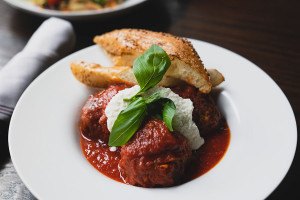The Dirt: What To Get At The Farmer’s Market This Weekend
Good thing we got our most dogmatic of food holidays out of the way for the year. Seriously. It’s as though the one rule about Thanksgiving is that we don’t talk about anything BUT Thanksgiving. So I’m not giving you yet another “innovative” take on how to recycle your leftovers or make a better turkey sandwich, only vegetables. Heads up though: If the Headhouse Farmer’s Market is your market of choice, you’ll have to wait until December 8th to restock, as market vendors are taking a week off to recover from Turkey Day. The Clark Park Market will be operating, as usual, as will the Rittenhouse Market, though it has shifted from the main growing season schedule of 9:00 to 3:00 to winter hours from10:00 until 2:00.
-Blue Hubbard Squash Though more grayish-green than actually blue, hubbard squash are still as formidable as Paul Bunyan’s ox. They have a round-ish shape with a pointed end and a little neck, and they can be as big, if not bigger, than bowling balls. Sure, you’ll find small ones too, but one of the things that makes them charming is their heft and their thick, warty skins. Their size and impenetrability mean that they’re extraordinarily long-keeping and juicy even if they’ve been sitting on your counter for weeks – even months. Instead of trying out the same dainty peel-and-cube technique you might use on a butternut, the hubbard requires more fortitude. To cook, carefully halve the beast, scrape out the seeds, prick with a fork several times, and bake cut side down in a sheet pan with a little bit of water at 300 degrees for about 15-25 minutes. Precooking these behemoths a bit means that you’ll be able to more easily chunk up the squash for a second cooking into soup, or gratin, or muffins, or whatever.
-Persimmon Though rarely grown in our area, you might encounter these golden globes at your market. When ripe they have a translucent, even luminous quality to them and they’re very soft. Fuyu persimmons can be eaten when still slightly firm, cut into wedges just as you might an apple, but other varieties can taste astringent until they are so ripe they feel as though they’ll melt right onto your table. For these, eat the delicate, golden flesh right out of the skin, or spread it on a piece or bread with rich, slightly tangy mascarpone. Be sure to ask your grower which variety you’re dealing with.
-Sunchoke Also called Jerusalem artichokes, sunchokes are the roots of a variety of sunflower. They look something like ginger, but less yellow in color and with less papery skin. Inside, they’re white and they have the juicy crunch of a water chestnut. Though they don’t taste of artichoke, they have a creamy flavor. Roast them alongside other root vegetables, or puree them into a velvety soup, but don’t peel them if you can avoid it. Much of their rich, nutty taste resides in their skins. Instead of fussing to peel them, simply scrub and wash them well. If you’ve never had them before, you may want to start small since, uh, for some people they provoke, um, flatulence due to their high content of the dietary fiber (technically an indigestible starch) called inulin. Good thing the relatives went home already, am I right?!


